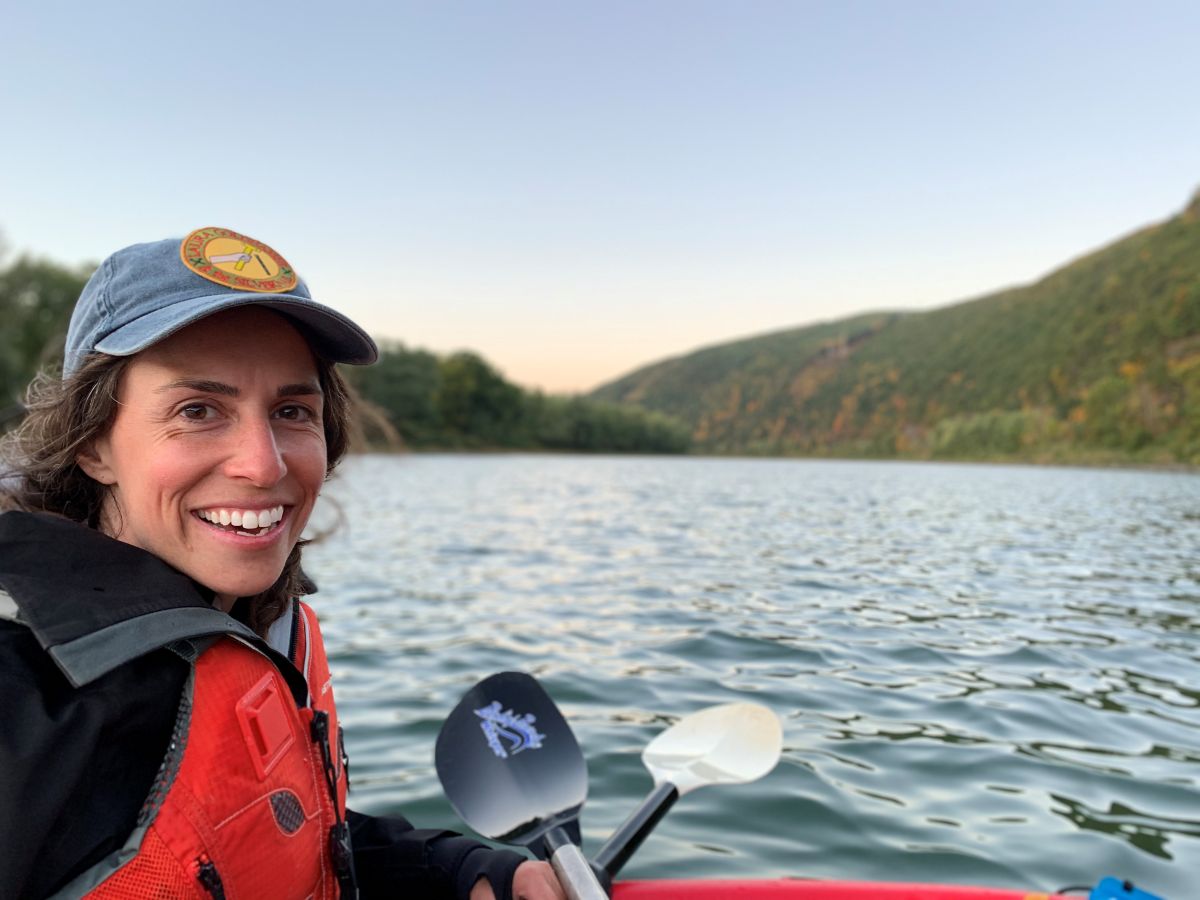We live in a very goal-oriented society. Though my goals are often running-related, five years ago I set my sights on something very different: paddling the length of the Susquehanna River. The Susquehanna River flows out of Otsego Lake in Cooperstown, New York, and ends 444 miles later at the Chesapeake Bay.
I paddled said river with two friends, Joel and Michelle. None of us was very experienced, which was evidenced by the fact that we chose to tackle this feat in the fall. I grew up just a few miles from the river, and knew it as a big, wide river — it grows to a width of about a mile, maybe more as it nears the bay. But that fall, when I drove up north to where it starts, I learned that it’s a much different river at its start; in fact, it’s more of a creek.
All this to say that progress was slow as we began our journey downstream. It was so slow, in fact, that we were in danger of not making it to the river’s end in the amount of time we had available for the trip. That is, until we buckled down and got serious, setting daily goals and essentially just paddling until we hit them. It was a lot of paddling — and sometimes walking/wading — a lot of work, and overall a very scrappy effort, but we made it.
If this sounds a bit familiar, perhaps you’ve heard me tell the story of this adventure before. I probably highlighted the bit about setting and attacking goals, but this time, I have different yarn to spin. In fact, it’s kind of the opposite.
The Uncertainty of Injury
I have been dealing with an issue with my knee for a while now. In December I had an operation to try to help it along. Since then, I have made a lot of progress, and recently, training has actually started going pretty well. Sure, the knee still isn’t perfect, but I’ve been pleased with its upward trajectory and hopeful that it will continue to improve. I’ve even been thinking about testing the waters in a race.
But, while the progress is good, this is still a hard place to be. I know because I’ve been here before. When I dealt with a Haglund’s deformity years ago, one of the hardest things was feeling like I couldn’t really plan. As runners we are always asking each other what race we’ve got coming up. You’d think it must be our favorite question, though maybe it’s just the lowest hanging fruit. It’s like the “how are you doing” of the running world.
Unfortunately, when you are injured, or making your way back from injury, you don’t always feel like you have a good answer for that question. Mine usually sounds something like, “well, I’d like to do this,” or “I’m thinking about that.” It sounds so wishy-washy and noncommittal. And that’s because it is. And to be honest, maybe that’s how it ought to be.
Sure, you could jump in and offer up a concrete goal like we did on our river trip: Today we want to paddle 60 miles; tomorrow we want to get to this town; a month from now I want to do this 50-mile race. When paddling the river, that felt appropriate. We had the tools for it to be so. But, when working through an injury, you don’t always have this luxury.
Be Cautious With Goals
In fact, pretending that you have the ability to do this can be dangerous. If you have the willpower to state a goal without it influencing you to do too much too soon, then go right ahead. For some people, that could be motivating and a good way to stay on track. However, if you don’t, making plans and stating goals can pressure you into making decisions that run you right off the track and deeper into injury.
Unfortunately, living in this space of uncertainty can be aggravating. It can make you feel irresponsible, noncommittal, and a bit lost. I hate that feeling. Yet as anxious as you may be to get back out there, it’s important to prioritize the goal of doing whatever it is that your body needs in the current moment. Instead of your goal being a race, maybe it’s just to do some consistent physical therapy, or a volume of training that feels within your means.
As another example, consider the house that my girlfriend, Jess, and I are building. Building a house is a big project. Though it isn’t rocket science, it takes a lot of time and effort. It’s a lot like running in that way. And like navigating an injury, there can also be a lot of time spent trying to figure things out.
There have been times during the build when we’ve dedicated a lot of our day to working on the house, squeezing in other responsibilities like day jobs and training into the early morning hours, after dark, or over lunch. While this was good for house productivity, it quickly lead to exhaustion. In recent weeks we’ve slowed things down, prioritizing other things in our lives and working on the house as we’re able. We don’t get as much done this way, but life feels a bit more sustainable, and in some ways, more enjoyable.
I guess what I am saying via all these examples; the river, the house, my trials with injuries, is this: running — and life — is a lot about doing what is needed in the moment. There are times to be bullish in your pursuit of a goal, and times to be a bit more reserved and cautious. It’s not about abandoning goal-setting, it’s just about utilizing goals in an appropriate manner.
On the river that meant sticking to some aggressive targets, with the house it’s meant being cognizant of the other things on our plate, and in running it means paying attention to what the body needs in its current state. In other words, it’s just one step at a time, the same way running has always been.
Call for Comments
Do you find goal-setting helpful?



